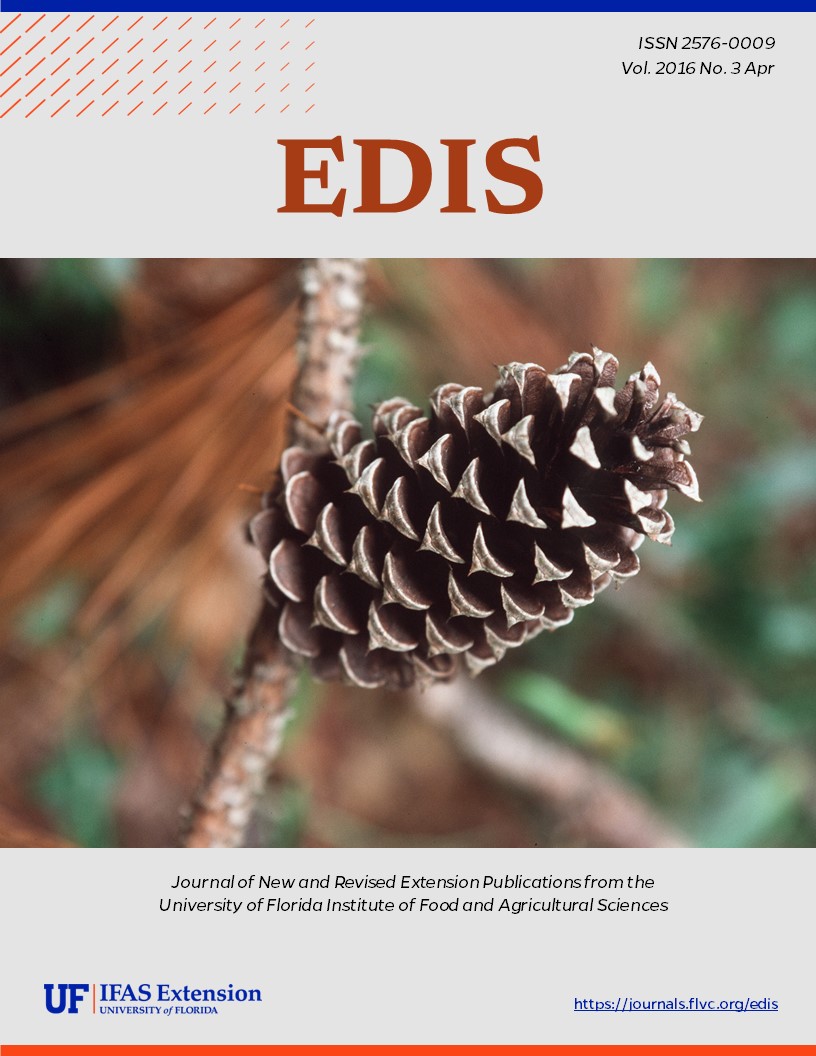Abstract
This EDIS publication is an alternate version of a page published first on the Featured Creatures website. The Featured Creatures collection provides in-depth profiles of insects, nematodes, arachnids and other organisms relevant to Florida. These profiles are intended for the use of interested laypersons with some knowledge of biology as well as academic audiences. This 5-page fact sheet that discusses the giant honey bee was written by Cameron J. Jack, Andrea Lucky, and James D. Ellis, and published by the UF Entomology and Nematology Department, February 2016.
EENY646/IN1119: Giant Honey Bee Apis dorsata Fabricius (Insecta: Hymenoptera: Apidae) (ufl.edu)
References
Batra SWT. 1997. Fruit-pollinating bees of the Garhwal Himalaya, U.P., India. Acta Horticulture 437: 325-328. https://doi.org/10.17660/ActaHortic.1997.437.39
Cao LF, Zheng HQ, Hu CY, He SY, Kuang HO, Hu FL. 2012. Phylogeography of Apis dorsata (Hymenoptera: Apidea) from China and neighboring Asian areas. Annals of the Entomological Society of America 105: 298-304. https://doi.org/10.1603/AN11104
DeBerry S, Crowly J, Ellis, JD. 2012. Swarm Control for Managed Beehives. Gainesville: University of Florida Institute of Food and Agricultural Sciences. ENY-160. http://edis.ifas.ufl.edu/in970 (February 2016)
Ellis JD, Ellis A. 2009. African Honey Bee, Africanized Honey Bee, Killer Bee, Apis mellifera scutellata Lepeletier (Insecta: Hymenoptera: Apidae). Gainesville: University of Florida Institute of Food and Agricultural Sciences. ENY 429. (8 December 2015) https://doi.org/10.32473/edis-in790-2009
Hall GH, Zettel-Nalen C, Ellis JD. 2010. African Honey Bee: What You Need to Know. Gainesville: University of Florida Institute of Food and Agricultural Sciences. EENY-114. (8 December 2015) https://doi.org/10.32473/edis-mg113-2014
Hepburn R, Radloff SE. 2011. Honeybees of Asia. Springer, Verlag, Berlin, Heidelberg. https://doi.org/10.1007/978-3-642-16422-4
Kastberger G, Weihmann F, Hoetzl T, Weiss SE, Maurer M, Kranner I. (2012). How to join a wave: Decision-making processes in shimmering behavior of giant honeybees (Apis dorsata). PLoS ONE 7: e36736. doi:10.1371/journal.pone.0036736. https://doi.org/10.1371/journal.pone.0036736
Koeniger N, Koeniger G, Tingek S. 2010. Honey Bees of Borneo: Exploring the Centre of Apis Diversity. Natural History Publications (Borneo), Kota Kinabalu, Sabah, Malaysia.
Mortensen AN, Burleson S, Chelliah G, Johnson K, Schmehl DR, Ellis JD. 2014. Tropilaelaps mite Tropilaelaps spp. Delfinado & Baker (Arachnida: Mesostigmata: Laelapidae). Gainesville: University of Florida Institute of Food and Agricultural Sciences. EENY604. (2 December 2015). https://doi.org/10.32473/edis-in1061-2014
Mortensen AN, Smith B, Ellis JD. 2015. The Social Organization of Honey Bees. Gainesville: University of Florida Institute of Food and Agricultural Sciences. ENY-166. (2 December 2015)
Oldroyd BP, Osborne KE, Mardan M. 2000. Colony relatedness in aggregations of Apis dorsata Fabricius (Hymenoptera, Apidae). Insects Sociaux 47: 94-95. https://doi.org/10.1007/s000400050015
Paar J, Oldroyd BP, Huettinger E, Kastberger G. 2004. Genetic structure of an Apis dorsata population: the significance of migration and colony aggregation. Journal of Heredity 95: 119-126. https://doi.org/10.1093/jhered/esh026
Robinson WS. 2012. Migrating giant honey bees (Apis dorsata) congregate annually at stopover site in Thailand. PLoS ONE 7: e44976. doi:10.1371/journal.pone.0044976. https://doi.org/10.1371/journal.pone.0044976

